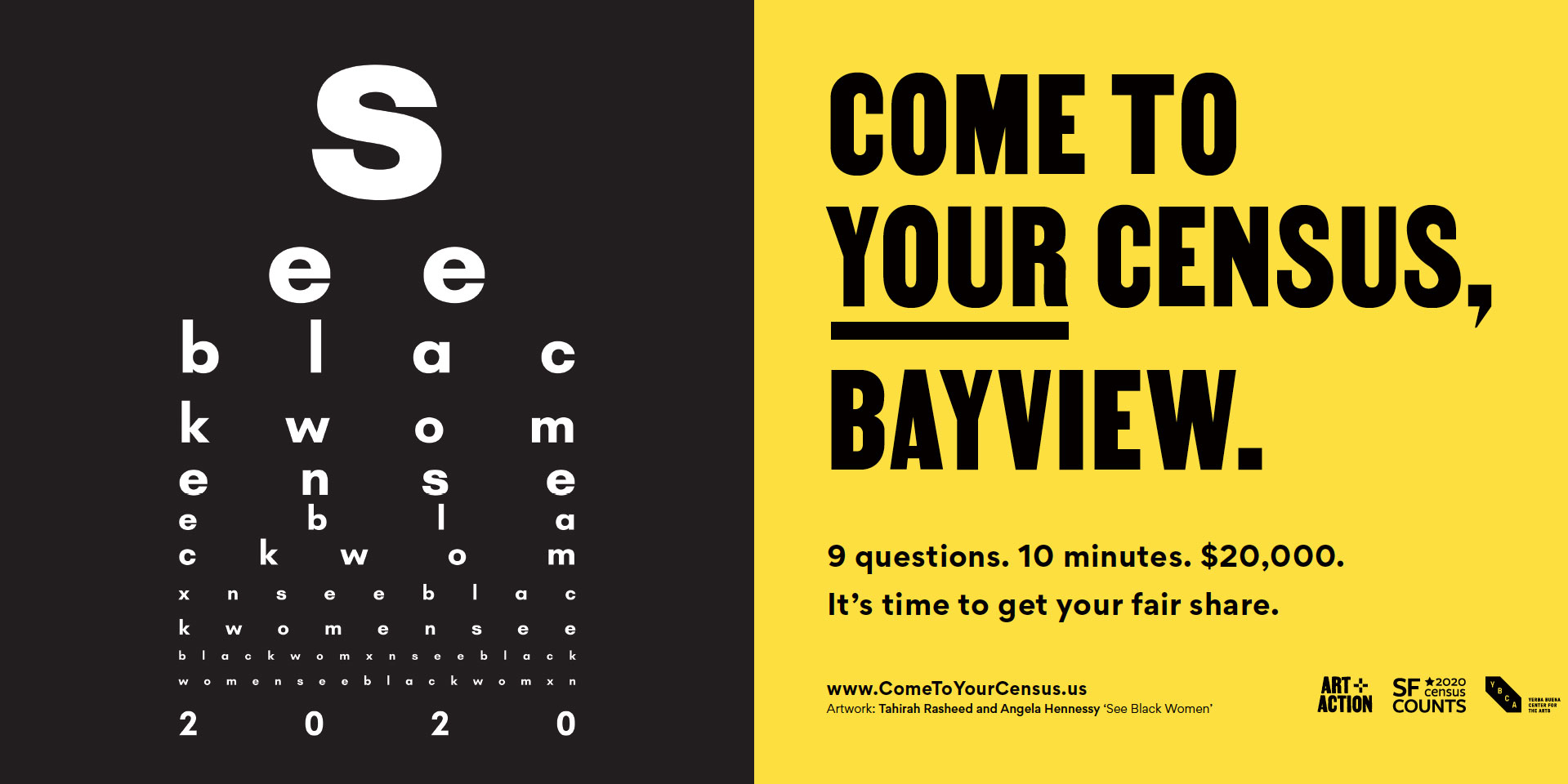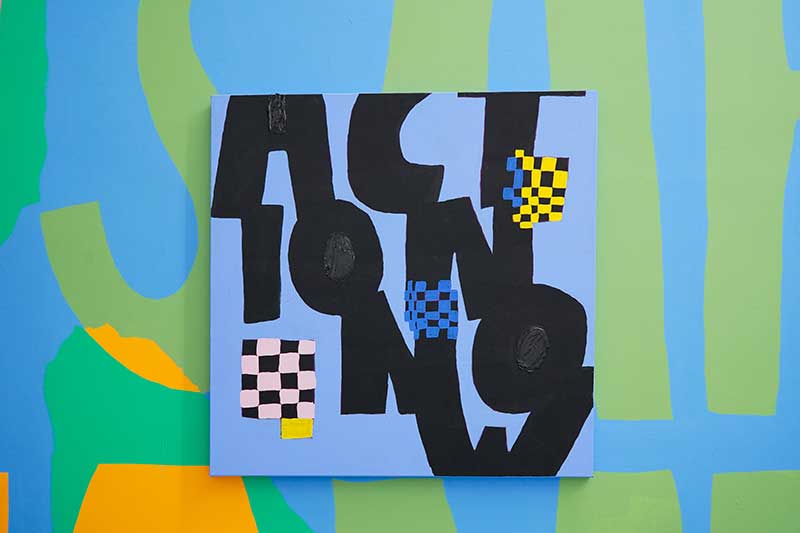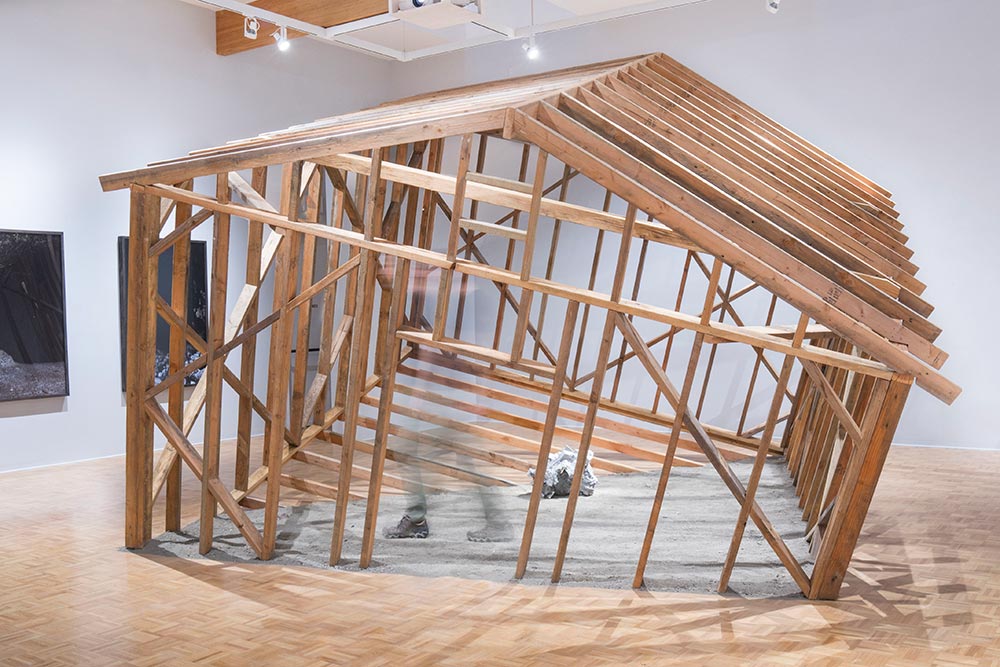Thu January 1st Closed
9 Questions with Angela Hennessy and Tahirah Rasheed

The editorial is in service of See Black Women, moderated by curatorial coalition member Ashara Ekundayo and in conversation with eight Bay Area Black Womxn artists to talk about visibility, grief, and our present paradigm shift in culture and practice. Join us for a two-part conversation that will take place on Tuesday, May 19 at 4-5:15pm PST and Tuesday, May 26 at 4-5:15pm PST.
As part of the Art+Action Coalition’s Come To Your Census campaign to inspire and mobilize Census participation by all communities, particularly those who have historically been marginalized, Art+Action commissioned the See Black Women Collective to contribute artwork that specifically invites the reader to “see and recognize” Black women’s lives and labor, for their outdoor public media Census campaign. As one pillar of Art+Action’s larger initiative of artist commissions, public programming, community events, exhibitions, and performances, a billboard by the See Black Women Collective—co-founded by Ashara Ekundayo, Angela Hennessy, Leigh Raiford, PhD, Tahirah Rasheed, and Lava Thomas—will be on view in San Francisco at 3rd and Thorton streets from mid-May through June.
Black communities have been undercounted in the decennial Census for decades, disconnecting them from past generations, and disadvantaging their families, communities, and neighborhoods by depriving them of political representation and funding for healthcare, food assistance, public transportation, child care and senior centers, schools, affordable housing, and more. To insist upon being seen and heard is an act of resistance. Telling one’s story, recording a community’s legacy, and creating visual representations of one’s ancestry are methods of resisting erasure.
Here, Angela Hennessy and Tahirah Rasheed respond to 9 questions related to Come To Your Census: Who Counts in America?—presented under the umbrella of Art+Action’s Come To Your Census campaign—about being truly seen as Black Queer Women, both in the artistic and civic arenas.
What is your first experience in seeing/feeling the impact of art + activism?
From the Sojourner Truth postcards to Janet Jackson’s Rhythm Nation, we are moved by the way in which Black Women and Femmes have activated and embodied the politics of representation with such innovation and vision.
What makes you feel a deep sense of belonging?
Being in a multi-generational community with Black Women who are actively standing in solidarity with and as accomplices to Brown/Asian/Indigenous/Queer/Trans/GNC Folx.
What do you wish for your community?
Equity. Safety. Wellness.
Who are the most vulnerable members of your community and how do you support them?
Black Women are the most vulnerable of our community and we are supporting them through the work of the See Black Women Collective. We are a movement of visual and performance artists, activists, curators, and writers raised on Black Feminist Theory. We host talks, exhibitions, events, and actions that highlight and celebrate the lives and labor of Black Women and Femmes.
What’s at stake in contemporary art when creating work that pertains to social and political reform?
There is a tendency to operate as theory that is disconnected from everyday practices. The art world is an incredibly elitist structure built on outdated hierarchies that secure access and recognition for very few. Tokenism is always a risk. Some folx just want something that “looks cool” over their couch. They want something easy to consume. As Black Women artists and creatives we walk a delicate and precarious line between visibility and commodification.
What are some strategies for breaking through political disengagement, distrust or distraction?
Grassroots organizing through word of mouth. These conversations start with people closest to you such as your immediate family and your close community.
What would push you past your fear?
What fear? “When I dare to be powerful—to use my strength in the service of my vision, then it becomes less and less important whether I am afraid.”- Audre Lorde
What is at stake for you and your community by taking the census?
Each person who completes the Census generates $20,000 to be used for community programs. Communities of color are vastly under-resourced so this is crucial. Filling out the Census also means resources for parks and outdoor spaces, health care for women and families, housing grants, and educational support. Taking the Census also holds a significant, symbolic value in proclaiming that we matter, that we are here, and that we will NOT be left out nor forgotten. See Black Women.
What, if anything, is worth fighting for?
Freedom from state-sanctioned violence, criminalization, and institutionalized racism is worth fighting for, as is fighting for representation and equity.
Lead image: Art+Action Coalition’s COME TO YOUR CENSUS billboard featuring the artwork See Black Women from members of the See Black Women Collective: Tahirah Rasheed, Angela Hennessy, and Ashara Ekundayo



